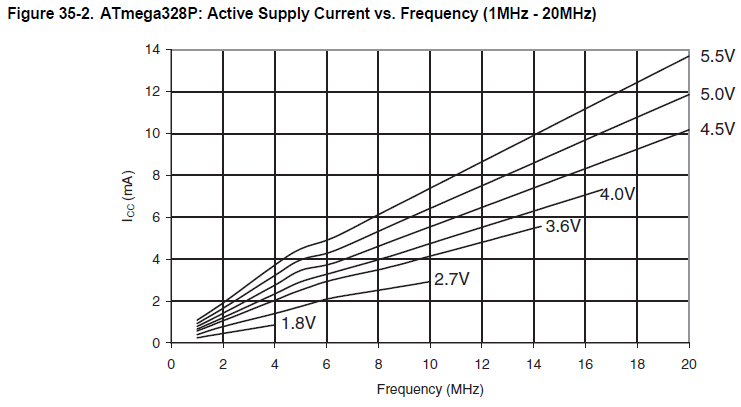According to the Atmega328P-PU Datasheet (side: 589) the current consumption of the microcontroller should be around 9.5mA (at 16MHz and 5V).
But I measured 15mA. (Nick Gammon who did some pretty good power saving research(gammon.com.au/power) got the same)
There is nothing connected to the outputs. The code I ran was this:
void setup () {}
void loop () {}
Now I'm wondering if this is just a normal deviation (datasheet to real world) or if Atmel measured their current consumption in a state that is different from mine?
EDIT:
I forgot to mention.. I didn't use it with the Arduino Uno board but as standalone device. There was only a 16Mhz oscillator with two capacitors connected. Power came directly form Power supply.
Now that I think about it.. Datasheet says this regarding the current measurement: "A sine wave generator with rail-to-rail output is used as clock source."
Is it possible that the oscillator needs that extra 5mA?
EDIT2:


